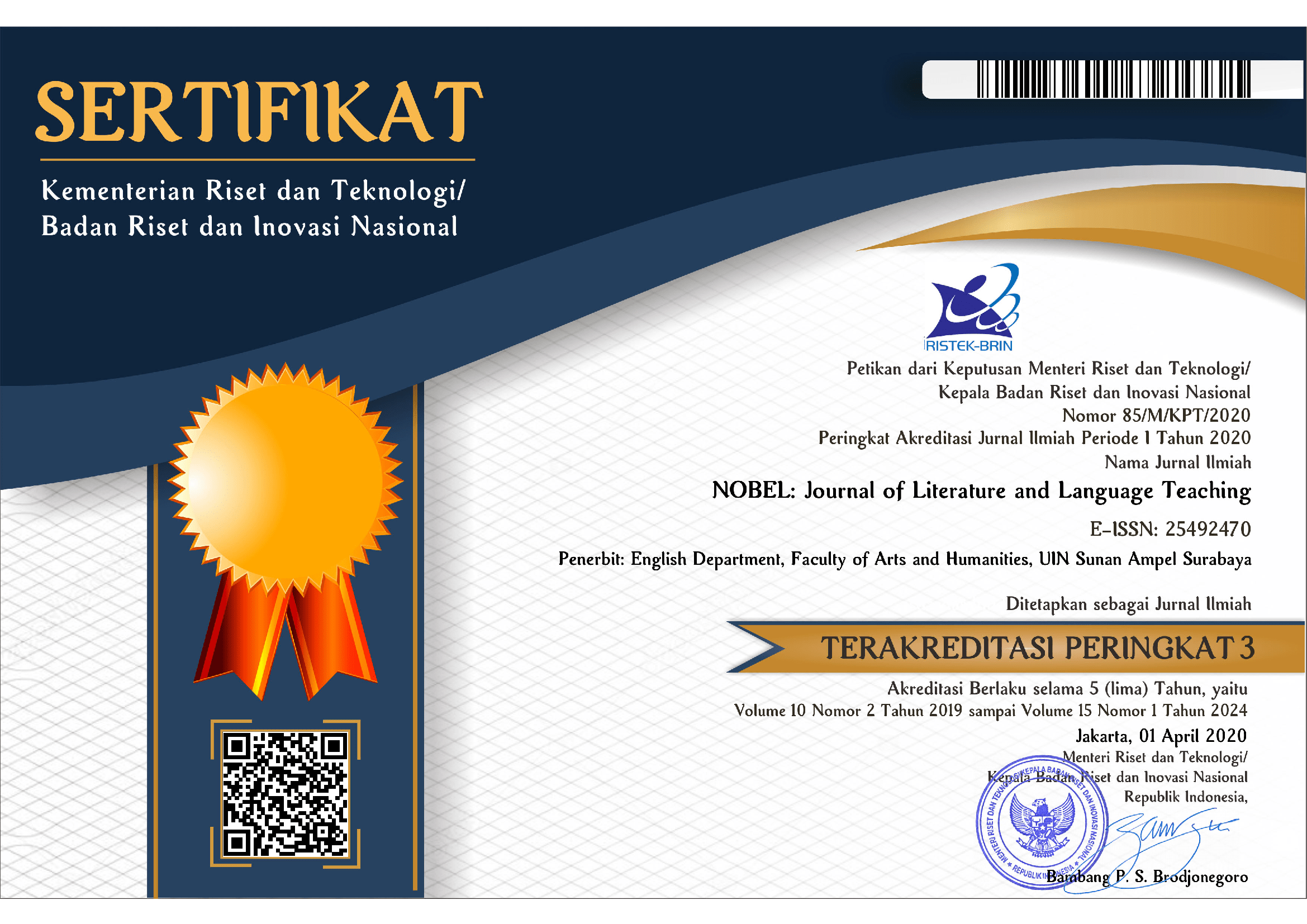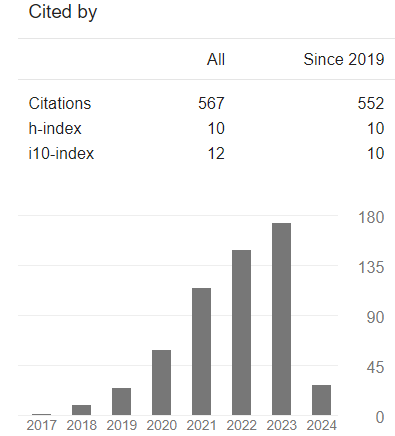Ideal Identity Construction in Beauty Product Advertisement of Garnier
DOI:
https://doi.org/10.15642/NOBEL.2016.7.2.120-136Keywords:
ideal identity construction; advertisement; beauty product; Garnier; critical discourse analysis (CDA)Abstract
This study aims at explaining how the advertiser constructs the ideal identity in the Garnier advertisement. It mainly focuses on the characteristics of language and other context used in the advertisement from a Critical Discourse Analysis (CDA) perspective. This is a descriptive qualitative method in which the data were collected from the beauty product advertisements of Garnier. The analysis is based on Fairclough's three dimensional models (textual features, discursive features, and social features). The findings of this study show that the ideal identity in the advertisement of Garnier is constructed by advertiser through the use of textual features and social features. The writer finds out that there is on-going struggle about how the advertisers construct the ideal identity in the modern society by giving the representation of attractive model and how they show their professionalism in technology by giving scientific evidence in their advertisements.
Downloads
References
Cook, G. (2001). The Discourse of Advertising (2nd Ed). London and New York: Routledge.
Fairclough, N. (1989). Language and Power. Discourse, Common Sense and Ideology. Longman Group UK Limited.
Halliday, M. A. K. (1994). An Introduction to Functional Grammar. London: Edward Arnold.
Iqbal, A., Malik H.D. & Maria R.T. (2014 September). Exploitation of Women in Beauty Products of “Fair and Lovelyâ€: A Critical Discourse Analysis Study. International Journal on Studies in English Language and Literature (IJSELL), 2(09),122-131. Retrieved from www.arcjournals.org.
Jorgensen, M. and Louise P. (2002). Discourse Analysis as Theory and Method. London: Sage Publications.
Kaur K., Nalini A. & Norimah M.Y. (2013). Beauty Product Advertisements: A Critical Discourse Analysis. Asian Social Science; Vol. 9, No. 3; 2013, Published by Canadian Center of Science and Education. Retrieved from www.ccsenet.org/ass.
Knupfer, N. N. & McLellan, H. (2001). The Handbook of Research for Educational Communications and Technology. Bloomington: AECT.
Rogers, R. (2004). An Introduction to Critical Discourse Analysis in Education. (Ed). Mahwah, New Jersey: Lawrence Erlbaum Associates, Inc.
Shaikh, M, Dr. Faraz A.B., and Shafkat A.K. (2015). The Representation Of Men And Women In Advertisements: A Critical Discourse Analysis. The Women – Annual Research Journal Vol. 7, 2015.
Stilman, A. (1997). Grammatically Correct: The writer's essential guide to punctuation, spelling, style, usage and grammar. Cincinnati, Ohio: Writer's Digest Books.
Vahid, H. and Saeedeh E. (2012). The Power behind Images: Advertisement Discourse in Focus. International Journal of Linguistics, 4 (04). Retrieved from www.macrothink.org/ijl
Wray, A. & Bloomer, A. (2006). Projects In Linguistics: A Practical Guide To Researching Language. New York: Oxford University Press Inc.







